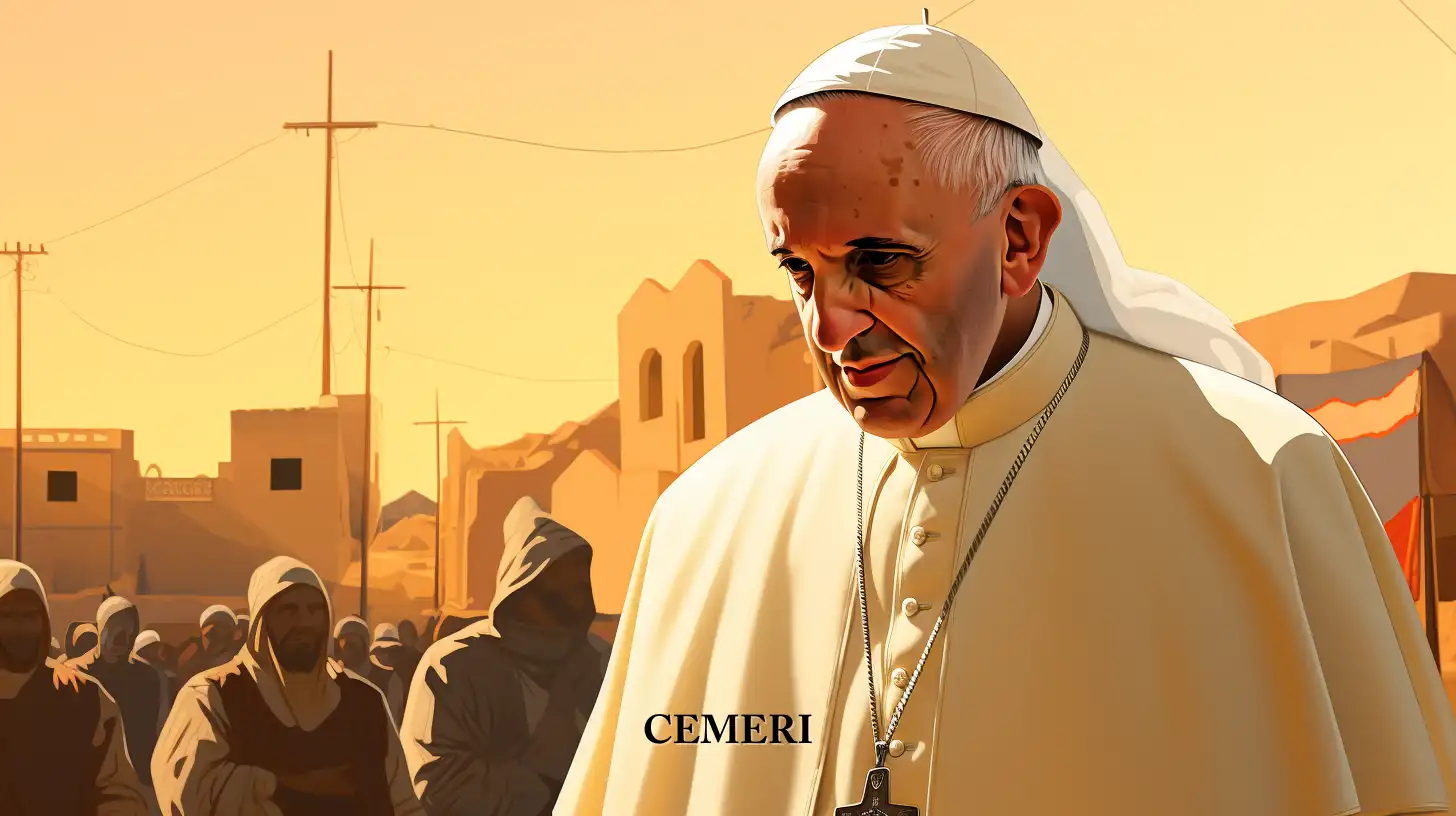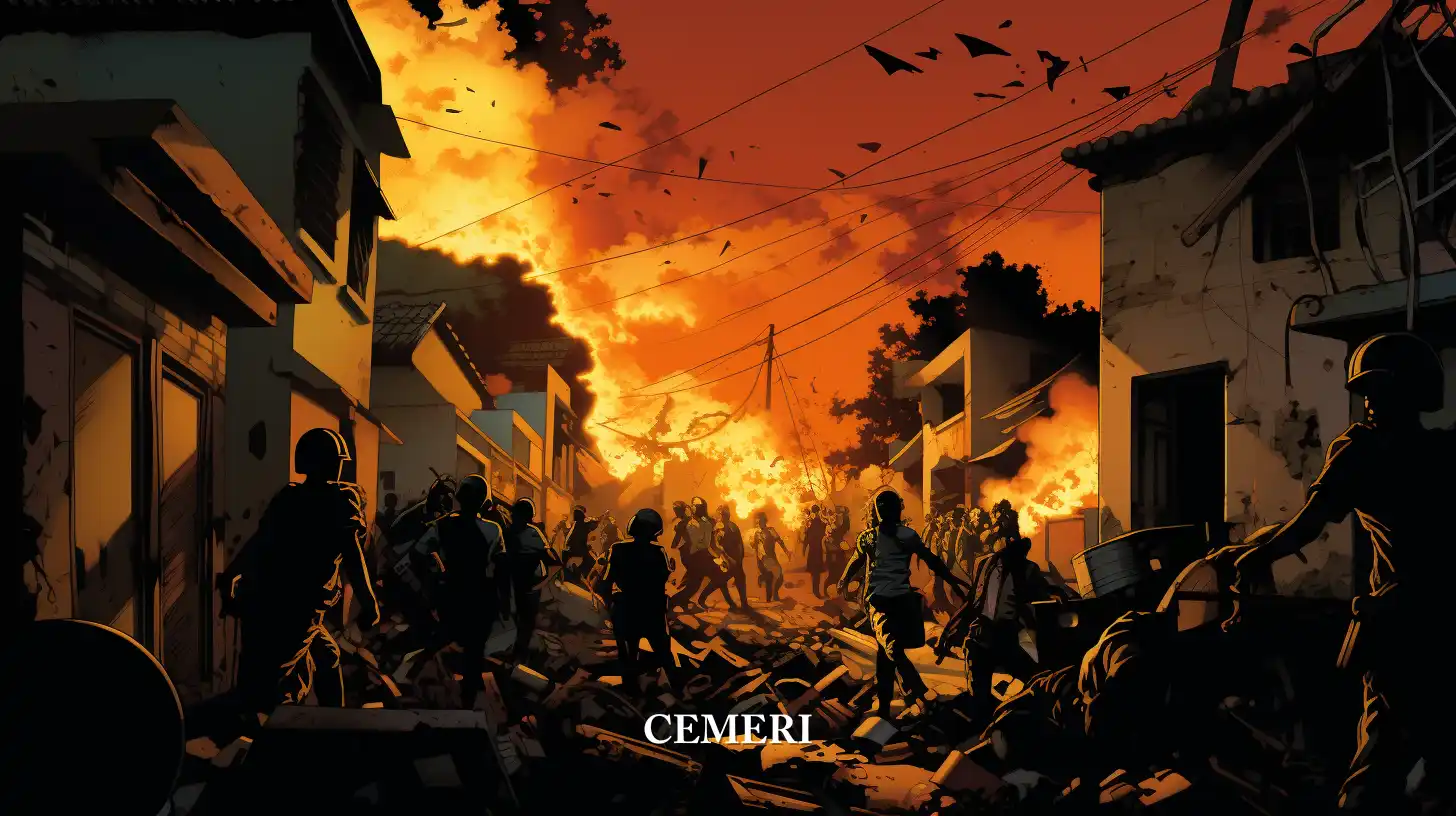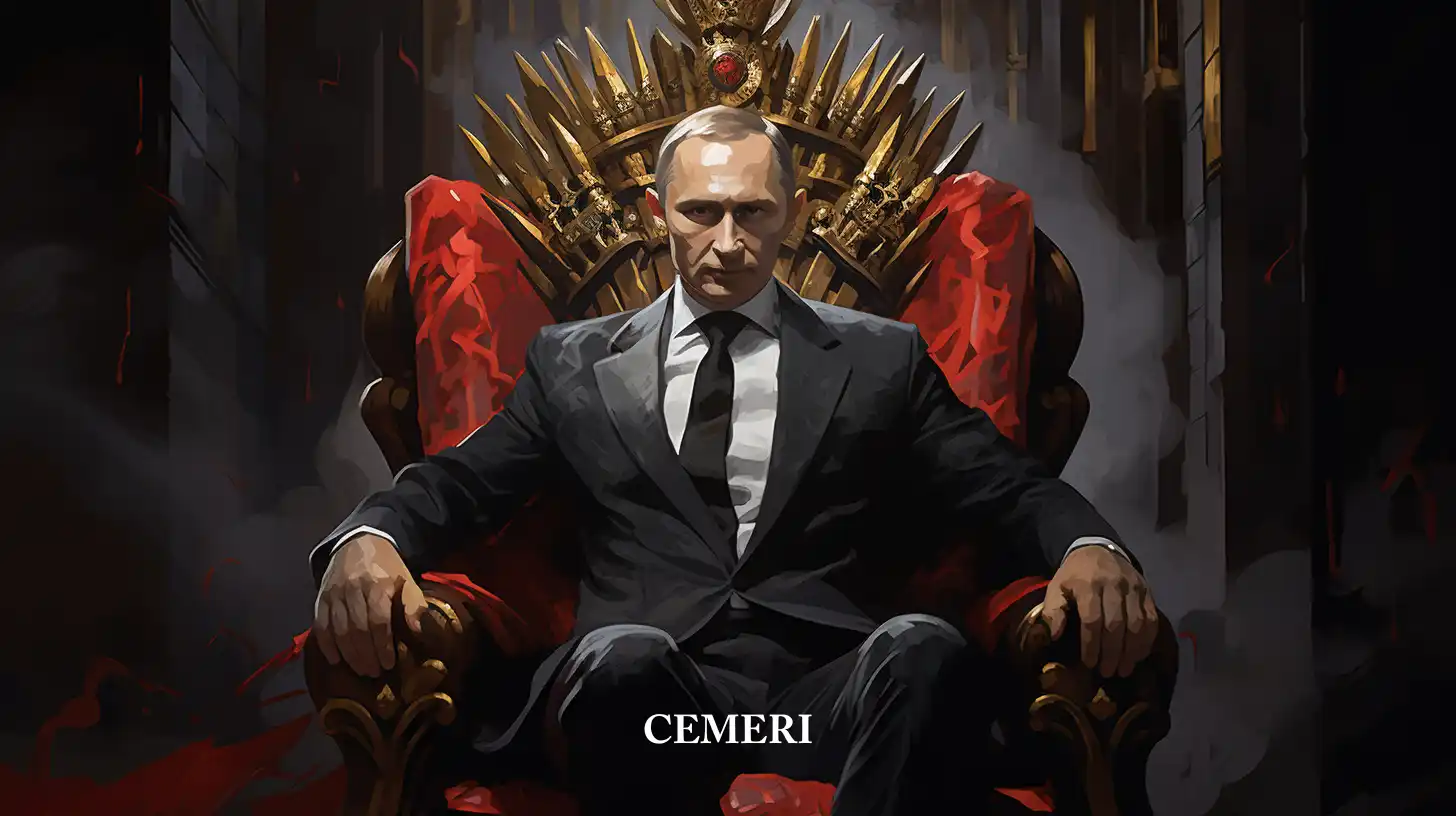Analysis
Bryan Acuña Obando
Political implications of the visit of Pope Francis I to Iraq
- Pope Francis' visit to Iraq has religious and political connotations for relations between Muslims and Christians in the Middle East.

Religious context
Pope Francis I finished his historic tour of Iraq (Santana 2021), a country with a Christian minority considerably diminished since the start of the DAESH group's persecution and invasion of the territory. Previously, there were at least 1.5 million Christians in the country and with the sweeping passage of the takfiríes Islamists reached 250,000 followers of this religion with centuries of existence in the country.
The Pope's visit has an important religious component, since his visit included being in Ur of the Chaldeans, a city where, according to the tradition of the three monotheistic religions, the patriarch Abraham originated, which will be the origin of Judaism, Christianity and Islam respectively.
He also visited the capital Baghdad, where there is also a Christian settlement, as well as the city of Erbil; which is the capital of Iraqi Kurdistan, as no less a detail, he was in the city of Bajdida (Qaraqosh) within the governorate of Nineveh which concentrates the largest number of Christians in the country and in a symbolic way officiated in the city of Mosul, where although there is a majority of Sunni Muslims, it also has Assyrian Christians, from the Chaldean Catholic Church, although with a presence in addition to Syrian Catholics and Orthodox.
A billboard celebrates the meeting between Pope Francis and Grand Ayatollah Ali Sistani on the pontiff's second day of his historic visit to Iraq (Bangkok Post)
This last emblematic city because it was the place where in 2014 the [proclamation] was made (https://www.rtve.es/noticias/20140629/estado-islamico-irak-levante-declara-instauracion-del-califato/963460 .shtml) from the beginning of the Islamic Caliphate of DAESH and where the tomb of the prophet was dynamited Jonas. During his visit to this city before an area destroyed by war, he proclaimed _ “…If God is the God of life —and he is— it is not lawful for us to kill our brothers in his name. If God is the God of peace —and he is— it is not lawful for us to make war in his name… _ ”
The foregoing, of course, emphasizing a call for interreligious dialogue for which Francis made this historic visit and which was postponed since the pontificate of John Paul II and the leadership of Saddam Hussein in Iraq, since in 1999 the necessary things were done. to achieve the visit, but finally had the opposition of the then leader of the country.
A not minor detail about this opposition of Hussein was his religious affiliation being from the Sunni Muslim minority in Iraq (despite being secular) and mainly his refusal was determined by his authoritarian character until the end of his days. .
In that year, the Pontiff expressed his interest in making a pilgrimage to "places linked to the history of salvation" as stated in a letter that can be found at [page](http://www.vatican.va/content/ john-paul-ii/en/letters/1999/documents/hf_jp-ii_let_30061999_pilgrimage.html) from the Vatican.
However, Francis I's trip has an additional component to the celebration of the "Great Jubilee of Salvation" and it is the intention to involve the Shiite leadership (majority in Iraq, moreover) in the "Human Fraternity Document" as the signed on 4 February 2019 between the Pope and Ahmad Al-Tayyib, Grand Imam of Al Azhar; important source of jurisprudence for the Sunni Muslim world.
For this, one of the rapprochement meetings on the matter was held with Ayatollah[1] Ali Al Sistani in the city of Najaf (south of Baghdad), which is an important spiritual center for Shiism ; It is also the place of the tomb of Ali Ibn Abi Tálib, the first imam of this religious current.
The importance of Najaf in the Shiite ideology and the figure of Ali Al Sistani as a source of emulation (Marjaa Al Akbar), as well as the importance of who can eventually take his place. Also raising on the other hand, the way in which these aspects have in themselves a transcendental political impact for another religious figure of the Shiite world such as the Iranian Ayatollah and also the important religious weight of the city of Qom in Iran.
Ali Al Sistani: Marjaa Al Akbar
Shiite army volunteers with a photo of Grand Ayatollah Ali Al Sistani at a graduation ceremony after completing his training. (Reuters)
Ayatollah Sayyed Ali Al Husaini Al Sistani was born in the Iranian city of Mashad in 1930, studied in Sistan (hence part of his name Sistani) and in the 50s left for Iraq to study under the tutelage of the Grand Ayatollah Abul-Qassim Khoei (1899-1992).
Ali Al Sistani would assume the role of Iran's Grand Ayatollah after the death of Ayatollah Khoei and the assassination of Grand Ayatollah Mohamed Sadeq al-Sadr at the hands of the Hussein regime. Later, he would also be cataloged with the title of Marjaa Al Akbar (greatest source of emulation), he is also the most influential leader since the fall of Saddam Hussein and was a great opponent of the US invasion of 2003, as well as standing against DAESH at the time and even called on young people to enlist in the military forces that fought them, in a text compiled by the US network [CNN](https://edition.cnn.com/2013/07/17/world/meast /grand-ayatollah-ali-al-sistani-fast-facts/index.html) would say the following:
"Citizens who can bear arms and fight against terrorists... must volunteer and join the security forces to achieve this holy purpose..."
Despite the above, Al Sistani's position regarding politics is generally elusive and prefers a less sectarian policy and even separate from political power, hence his position in opposition to the vision of wilâiat-ul Faqîd as where from the Great Ayatollah Khoei promulgated that the figure of the jurist focuses on religious aspects. Al Sistani has maintained this "apolitical" position and has urged clerics not to be tempted to participate in political affairs.
Contrary to what happens with this "political quietism" of the Ayatollahs in Iraq, in the Islamic Republic of Iran where there is a Shiite majority and also a central clerical leadership, the image of wilâiat-ul Faqîd is active and openly dominates all aspects. of the sociopolitical life of the country.
Importance of the visit from a political and regional perspective.
Members of the Abbas Fighter Squad, a Shiite militia group, carry a photo of spiritual leader Grand Ayatollah Ali al-Sistani during a parade in Basra, 550 kilometers (340 miles) southeast of Baghdad, Iraq, on Saturday, September 26. 2015. Iraqi security forces and allied Shiite militias are training together to try to retake Iraqi cities under Islamic State control, authorities said. (AP Photo / Nabil al-Jurani)
The meeting of Pope Francis with the Shiite leader Al Sistani sends several messages, some clearer than others. In the first place, it expands a discourse to approach interreligious dialogue that it has always promoted and where, for example, in a 2019 statement during a meeting, it pointed out that "interreligious dialogue is the response to the plagues of the world" mentioning the "Document on Human Fraternity” signed in Abu Dhabi in February of the same year. (Vatican News 2019)
On the other hand, from a political-religious point of view, as already mentioned above, this would add points to the influence in the Shiite world of the jurisprudence of the city of Najaf, which had lost relative power due to the invasive and abusive policy of the fallen president Saddam Hussein, but even before, since the establishment of present-day Iraq in 1921, the city had lost its dominant force.
In the year 1979 with the Islamic Revolution of Iran, the Ayatollah Khomeini would give it a transcendental weight in the Shiite jurisprudence of the city of Qom which will be from that moment on one of the most important religious forces of the Twelver Shiite current; the largest of the ramifications of Ali's followers.
However, as has already been said, after the fall of Hussein, with the US invasion of Iraq and with the establishment of DAESH in the territory, the importance of Najaf returned to the agenda. While clerics such as Sistani do not hold stances in favor of Western invaders, they have more publicly embarrassed the wilâiat-ul Faqîd ideals of the Iranian Ayatollahs, earning them points among anti-war reformists. current status quo, so the visibility that the meeting with Francisco I gives him gives him much more support and political legitimacy among public opinion.
This, for the effects of the political and economic blockade that the government of Tehran is experiencing, could be lapidary, although the religious schemes are under the acceptance of the population, there could be a greater impulse to the quietist policies of Ali Al Sistani that "infect" other clerics and political leaders in the governments of Iraq and Iran as State policies, eventually weakening the influence of political Islamism that wants to have greater control, something that will undoubtedly continue to be seen in clear competition in the near future.
Ali Al Sistani is an escape valve against the invasive dogmatism of Iranian religious power, when deciding on the separation between government and faith, it encourages others to want to follow the example and try to promulgate it in their own countries, although it mainly applies to Iraqi and Iranian territories .
Despite the above, Al Sistani is not favorable to the West, he simply has a less open position in politics and more of religious separation from the vain affairs of political power, but he has had demonstrations that make you think like sending [condolences] (https://en.irna.ir/news/83622416/Ayatollah-Sistani-condoles-Supreme-Leader-on-martyrdom-of-General) to the Iranian government for the assassination of General Soleimani in January 2020 by the army US. His dogmatic differences with Iran do not automatically make him a staunch ally for Western intentions in the region.
Francisco of course is a religious representative, but at the same time he is a political figure, more than 1,000 million people follow Roman Catholicism, also although he is not a representative of all Christians from an ideological point of view, he does have a very important influence on the image of Western Christianity, to this is added that in his visit he incorporated meetings with members of the Chaldean and Assyrian Eastern Church, among others, so this union of forces gives a greater political and religious value to the presence of the Pope in the cradle of the three monotheistic religions.
Final thoughts.
There are additional factors that must be considered outside the role of the religious of Najaf and Qom, and that is that in the specific case of Iraq, the governmental instability that since the signing of the constitution in 2005 tries to unify the most important political and social forces, with some difficulties based on sectarianism and fighting between proxies supported by radical Islamists of different funding.
On the other hand, an additional important element is the possibility of an eventual death of Ayatollah Ali Al Sistani; he is an elderly gentleman and his succession needs to ensure that this quietist line is maintained and that he does not end up having some kind of flirtation with Iranian positions, or siding with the wilâiat-ul Faqîd and getting involved in government decisions.
This is important because unlike Iran where succession is determined by law, in Iraq the process can be a little less structured and generate headaches that can range from weeks to, in extreme cases, years to choose a new "source." of emulation”.
Finally, political figures in Iraq such as Muqtada al-Sadr, son of Iraq's prominent cleric Mohamed al-Sadr, become a token that could eventually play the role of influence that Iran needs within Iraq, however, He is accused of playing a double game before which it is not clear what his strategy is in the end, but that at the level of strength that Muqtada possesses could be another possible source of instability in a country that since the fall of its dictator has not managed to have an adequate level of governance and experiences the misfortunes of the foreign military presence as an additional factor of the perfect storm that made it a breeding ground for the sectarianism that promoted DAESH.
Sources
CNN. CNN. 17 de julio de 2013. https://edition.cnn.com/2013/07/17/world/meast/grand-ayatollah-ali-al-sistani-fast-facts/index.html (último acceso: 10 de marzo de 2021).
Kadhim, Abbas, y Barbara Slavin. «Atlantic Council.» julio de 2019. https://www.atlanticcouncil.org/wp-content/uploads/2019/07/After_Sistani_and_Khamenei-Looming_Successions_Will_Shape_the_Middle_East.pdf (último acceso: 24 de marzo de 2021).
Moya, Sergio. «Elección entre leales.» Reportes CEMOAN, 2013: 7. Santana, Alba. «France24.» 8 de marzo de 2021. https://www.france24.com/es/medio-oriente/20210308-concluye-gira-papa-francisco-irak (último acceso: 9 de marzo de 2021).
Vatican News. «El Papa: el diálogo interreligioso es la respuesta a las plagas del mundo.» noviembre de 2019. https://www.vaticannews.va/es/papa/news/2019-11/papa-francisco-dialogo-interreligioso-respuesta-plagas-mundo.html (último acceso: 23 de marzo de 2021).
Verdú, Daniel. El País. 7 de marzo de 2021. https://elpais.com/internacional/2021-03-07/el-papa-en-mosul-no-es-licito-hacer-la-guerra-en-nombre-de-dios.html (último acceso: 9 de marzo de 2021).
[1] Significa literalmente “Señal de Alá” este tiene una autoridad religiosa e incluso tiene influencia en aspectos políticos en sus respectivos países, aunque en el caso de Alí Al Sistani se opone a la figura del wilâiat-ul Faqîd como guía del jurista religioso.

